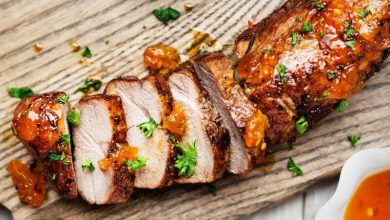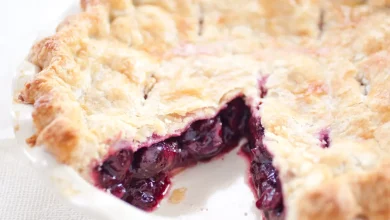🍲 Asian Couscous: A Flavorful Fusion 🌾
Asian couscous is a delightful fusion of traditional North African couscous and Asian flavors, creating a unique and delicious dish that combines the best of both worlds. Here’s a detailed response to your questions, sprinkled with emojis for that extra touch of fun! 😄
📜 History:
Couscous, originally from North Africa, dates back thousands of years and is a staple in many Mediterranean and Middle Eastern cuisines. The exact origin of Asian couscous is less clear, as it represents a creative blend of culinary traditions from both North Africa and Asia. This fusion likely emerged as a result of globalization and the desire to experiment with new flavors.
🌾 Components:
- Couscous: The base of the dish is couscous, a type of semolina wheat pasta that cooks quickly and has a neutral flavor, making it ideal for absorbing the Asian-inspired sauces and spices.
- Asian Vegetables: Typically, Asian couscous includes a medley of colorful and nutritious vegetables, such as bell peppers, broccoli, carrots, and snap peas.
- Protein: You can add your choice of protein, like chicken, shrimp, tofu, or even tempeh, to give the dish a heartier and more satisfying character.
- Sauces and Spices: Asian couscous is seasoned with an array of Asian sauces and spices, which may include soy sauce, ginger, garlic, sesame oil, and chili flakes.
- Garnishes: Fresh herbs like cilantro or Thai basil, and toppings such as crushed peanuts or sesame seeds, add a final burst of flavor and texture.
👩🍳 Steps to Prepare:
Here’s a simplified step-by-step guide to making Asian couscous:
-
Cook the Couscous:
- Boil water or vegetable broth.
- Pour the boiling liquid over the couscous in a bowl.
- Cover the bowl and let it sit for 5-10 minutes until the couscous absorbs the liquid and becomes fluffy.
-
Prepare the Protein:
- If you’re using chicken or shrimp, cook it in a pan with a bit of oil until it’s fully done.
- For tofu or tempeh, you can pan-fry or bake them until they’re golden and crispy.
-
Sauté the Vegetables:
- In a separate pan, stir-fry the colorful veggies until they’re tender-crisp.
-
Make the Sauce:
- In a small bowl, mix together your chosen Asian sauces and spices, adjusting the flavors to your liking.
-
Combine and Toss:
- Fluff the cooked couscous with a fork.
- Add the cooked protein, sautéed vegetables, and the sauce to the couscous.
- Gently toss everything together, ensuring the flavors are well distributed.
-
Garnish:
- Before serving, sprinkle fresh herbs and your favorite toppings over the dish for an extra burst of flavor.
⏰ Preparation Time:
The time needed to prepare Asian couscous can vary depending on your cooking skills and whether you’re using pre-cooked or fresh ingredients. On average, you can expect to spend about 30-45 minutes from start to finish.
Enjoy your culinary adventure with Asian couscous, a delightful blend of flavors and cultures! 🍽️🌏🌾🥢
🥦🍽️ Nutrition Facts and Health Information for Asian Couscous 🍚🥕
Asian couscous can be a delicious and healthy dish, provided you choose your ingredients wisely and pay attention to portion sizes. Here are some general nutrition facts and health information for this delightful fusion dish:
📊 Nutrition Facts (per serving, values are approximate):
- Calories: Approximately 350-450 calories per serving, but this can vary based on ingredients and portion size.
- Protein: 10-20 grams, depending on your choice of protein (chicken, tofu, shrimp, etc.).
- Carbohydrates: About 60-80 grams, primarily from couscous and vegetables.
- Dietary Fiber: 5-8 grams, thanks to the veggies and whole wheat couscous.
- Fats: 5-10 grams, with variations depending on the amount of oil used in cooking.
- Sodium: The amount of sodium can vary widely depending on the sauces and seasonings you use, so choose lower-sodium options if you’re concerned about sodium intake.
🌿 Health Information:
- Nutrient-Rich: Asian couscous can be nutrient-rich, especially if you load it up with a variety of colorful vegetables. These veggies provide essential vitamins, minerals, and antioxidants.
- Protein: The protein content can be moderate to high, making it a satisfying meal that can support muscle growth and repair.
- Whole Grains: Whole wheat couscous is a healthier choice compared to refined couscous because it contains more fiber and nutrients.
- Portion Control: Be mindful of portion sizes, as it’s easy to overeat couscous. Stick to recommended serving sizes to manage calorie intake.
- Sauces and Sodium: Some Asian sauces used in this dish can be high in sodium. Consider using reduced-sodium versions or controlling the amount you add.
- Customization: One of the benefits of Asian couscous is its versatility. You can tailor it to meet your dietary needs, whether you’re looking to add more veggies, reduce calories, or increase protein content.
🌟 Overall, Asian couscous can be a healthy and balanced meal option when prepared thoughtfully. It offers a mix of carbohydrates, proteins, and fiber from whole grains and vegetables. To make it even healthier, you can experiment with ingredient choices, reduce added sugars and sodium, and increase the proportion of veggies and lean protein. Remember to adapt the recipe to your specific dietary requirements and goals. Enjoy your nutritious and tasty Asian couscous! 🍲🥦🍚🥢




